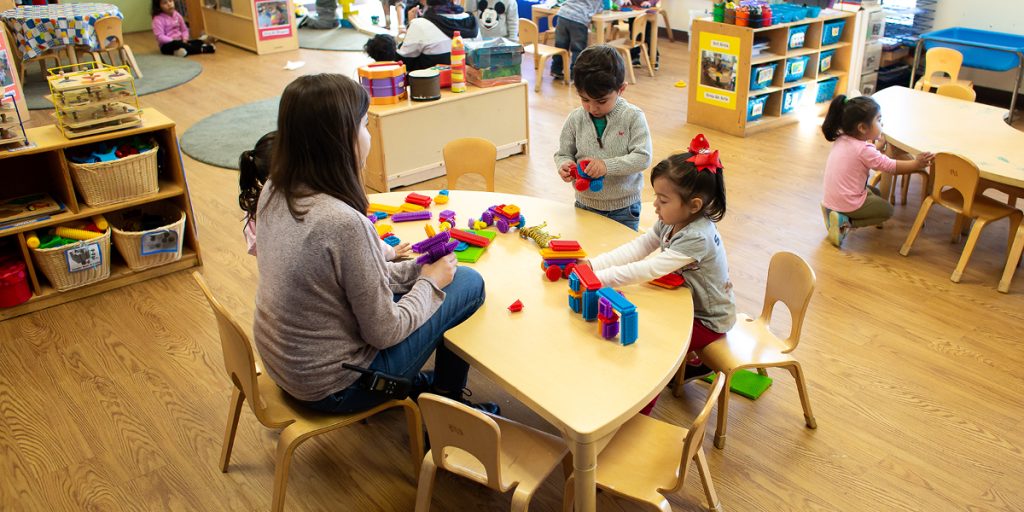Early Childhood Education (ECE) plays a vital role in shaping a child’s cognitive, emotional, and social development. Research has consistently shown that quality early education programs have long-term benefits, including higher academic achievement, improved social skills, and increased career opportunities. The first few years of life are critical for brain development, making early childhood education a fundamental investment in a child’s future. This article explores the importance, key components, challenges, and innovative approaches in early childhood education.
The Importance of Early Childhood Education

The early years, from birth to age eight, are a crucial period for cognitive and emotional growth. During this time, children develop essential skills such as language, problem-solving, creativity, and social interaction.
Benefits of Early Childhood Education
- Cognitive Development – Stimulates brain growth, improving memory, attention, and reasoning skills.
- Social and Emotional Growth – Helps children develop confidence, empathy, and relationship-building abilities.
- School Readiness – Prepares children for kindergarten and future academic success.
- Language and Communication Skills – Expands vocabulary and enhances verbal expression.
- Lifelong Learning Habits – Encourages curiosity, creativity, and love for learning.
💡 Fact: According to studies, children who attend high-quality early childhood education programs are more likely to graduate high school, pursue higher education, and have stable careers.
Key Components of a Strong Early Childhood Education Program
A successful ECE program integrates various elements to support holistic child development.
1. Play-Based Learning
Play is the foundation of early learning, allowing children to explore, experiment, and build problem-solving skills.
🔹 Examples of Play-Based Learning:
- Dramatic Play: Role-playing as doctors, teachers, or shopkeepers.
- Sensory Play: Using sand, water, or clay for hands-on learning.
- Building Blocks: Enhancing creativity and spatial awareness.
2. Developmentally Appropriate Curriculum
Curriculum design should align with a child’s developmental stage, emphasizing hands-on activities, storytelling, and interactive lessons.
🔹 Key Focus Areas:
- Literacy and numeracy basics.
- Science and nature exploration.
- Music, art, and movement activities.
3. Social and Emotional Learning (SEL)
Teaching children how to manage emotions, build relationships, and develop empathy is crucial for lifelong success.
🔹 SEL Activities:
- Teaching conflict resolution through group activities.
- Encouraging sharing and teamwork.
- Helping children express their emotions through storytelling or art.
4. Qualified and Trained Educators
Teachers play a crucial role in fostering a nurturing learning environment.
🔹 Key Qualities of an Effective Early Childhood Educator:
- Patience, creativity, and enthusiasm.
- Understanding child psychology and behavior.
- Strong communication skills to interact with children and parents.
5. Parent and Community Involvement
Parental engagement in a child’s early education enhances learning outcomes.
🔹 Ways to Involve Parents:
- Organizing family reading nights.
- Encouraging at-home learning activities.
- Conducting regular parent-teacher conferences.
6. Safe and Stimulating Learning Environment
A child-friendly classroom fosters engagement and security.
🔹 Features of a Quality Learning Space:
- Bright, colorful decorations and learning materials.
- Age-appropriate toys, books, and art supplies.
- A safe, clean, and organized setting.
Challenges in Early Childhood Education
Despite its importance, early childhood education faces several challenges worldwide.
1. Limited Access to Quality Education
Many children, especially in low-income areas, lack access to quality early learning programs.
💡 Solution: Expanding public preschool programs and community-based initiatives.
2. Teacher Shortages and Low Wages
ECE educators are often underpaid and undervalued, leading to high turnover rates.
💡 Solution: Investing in teacher training, professional development, and better salaries.
3. Lack of Standardized Curriculum
Many early childhood programs have inconsistent learning standards.
💡 Solution: Developing universal ECE guidelines while allowing flexibility for cultural and local adaptations.
4. Parental Awareness and Involvement
Some parents may not fully understand the importance of early education.
💡 Solution: Increasing community outreach and workshops for parents.
5. Integration of Technology in Learning
Balancing screen time with interactive learning remains a concern in ECE.
💡 Solution: Using age-appropriate educational apps and limiting passive screen exposure.
Innovations in Early Childhood Education
ECE is evolving with new teaching methods and technology, enhancing learning experiences for young children.
1. Technology-Enhanced Learning
Digital tools provide interactive and engaging educational experiences.
🔹 Examples:
- Interactive learning apps for early literacy and math.
- Augmented Reality (AR) books that bring stories to life.
- AI-powered storytelling and virtual learning assistants.
2. Montessori and Reggio Emilia Approaches
These child-centered methodologies focus on hands-on exploration and creativity.
🔹 Montessori Method: Encourages independence and self-directed learning.
🔹 Reggio Emilia Approach: Uses projects and artistic expression for learning.
3. Nature-Based Learning and Outdoor Classrooms
Exposure to nature enhances sensory development and curiosity.
🔹 Activities Include:
- Gardening and nature walks.
- Outdoor science experiments.
- Learning through natural play materials like leaves, stones, and water.
4. Social-Emotional Learning (SEL) Integration
More schools are incorporating emotional intelligence into daily learning.
🔹 Methods:
- Mindfulness and relaxation exercises.
- Emotion recognition games.
- Peer group activities for collaboration and communication.
5. STEM Education in Early Years
Introducing science, technology, engineering, and math (STEM) concepts early builds curiosity and problem-solving skills.
🔹 Examples:
- Simple coding games for preschoolers.
- Hands-on engineering activities with building blocks.
- Science experiments with everyday household items.
Future Trends in Early Childhood Education
The future of ECE is driven by innovation, inclusivity, and research-based teaching strategies.
- Universal Preschool Access – Governments are working towards making ECE available to all children.
- AI and Personalized Learning – Adaptive learning programs tailored to individual needs.
- Bilingual and Multilingual Education – Encouraging early language acquisition.
- Holistic Well-Being Approach – Integrating nutrition, health, and emotional development.
- Parent-School Partnerships – Strengthening home-based learning support.
Conclusion
Early Childhood Education is the foundation of lifelong learning, shaping a child’s intellectual and emotional growth. By focusing on play-based learning, social-emotional development, technology integration, and teacher training, we can create environments that nurture young minds. Despite existing challenges, innovative teaching approaches and community engagement can make quality early education accessible to all children, ensuring a brighter future for the next generation.
💡 Investing in early childhood education today creates a smarter, more capable, and compassionate society tomorrow.


